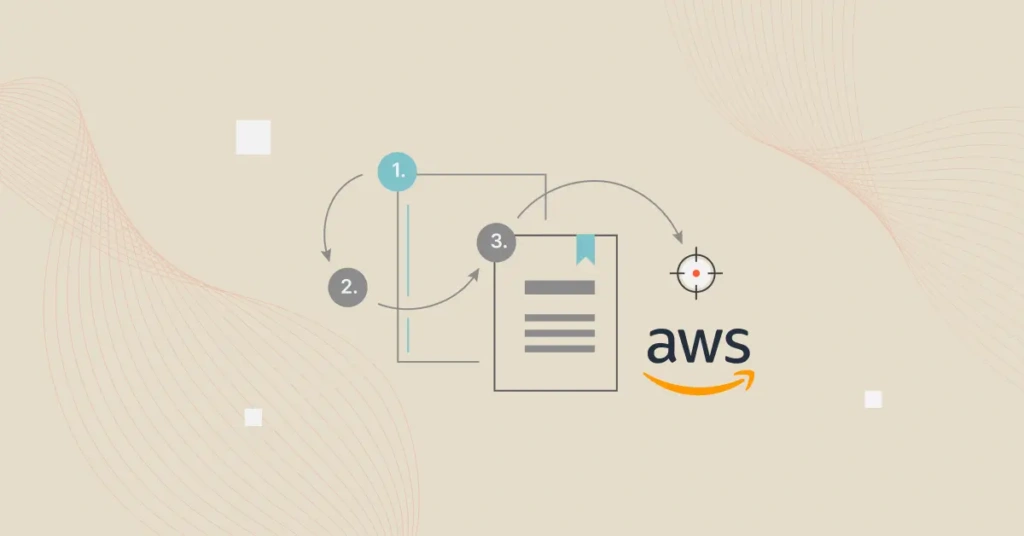Running cloud infrastructure without forecasting is a lot like operating a delivery company without checking the weather. You might plan for smooth traffic and sunny skies, only to be hit with a sudden storm, delays, and unexpected costs.
The same happens when your cloud usage spikes and your AWS bill catches you off guard.
For engineers, CTOs, and CFOs alike, AWS forecasting isn’t just about estimating future costs. It’s also about staying ahead of demand, aligning cloud spend with business goals, and avoiding expensive surprises.
In this guide, we’ll break down what AWS forecasting is, the tools AWS provides (like Amazon Forecast), the gaps you need to know about, and how platforms like CloudZero can take your forecasting from reactive to strategic.
What Is AWS Forecasting?
AWS forecasting involves using tools and data to predict your future AWS usage and costs. The practice helps your team plan ahead so you can avoid surprise bills, optimize resource allocation, and keep budgets in check.
Forecasting on AWS can involve native services like Cost Explorer, Amazon Forecast, and AWS Budgets, as well as robust alternatives designed to provide deeper and more granular visibility and control.
See our What Is Cloud Forecasting And How To Do It Right guide for a starter on this topic, including types of forecasting methods to use today.
Other than that, there are two main types of forecasting on AWS:
- Cost forecasting: This involves projecting future cloud spend based on past usage (historical cost analysis). Think of Amazon Cost Explorer showing you a graph of what you’re likely to spend next month if your usage trends stay the same.
- Business forecasting: Here, the focus is on using AWS’s machine learning service, Amazon Forecast, to predict key business metrics — like customer demand, revenue, or web traffic.
These insights can help you scale your infrastructure up or down to meet demand without overspending.
Native AWS Forecasting Tools You Have To Know
These include:
AWS Cost Explorer (Forecasts View)
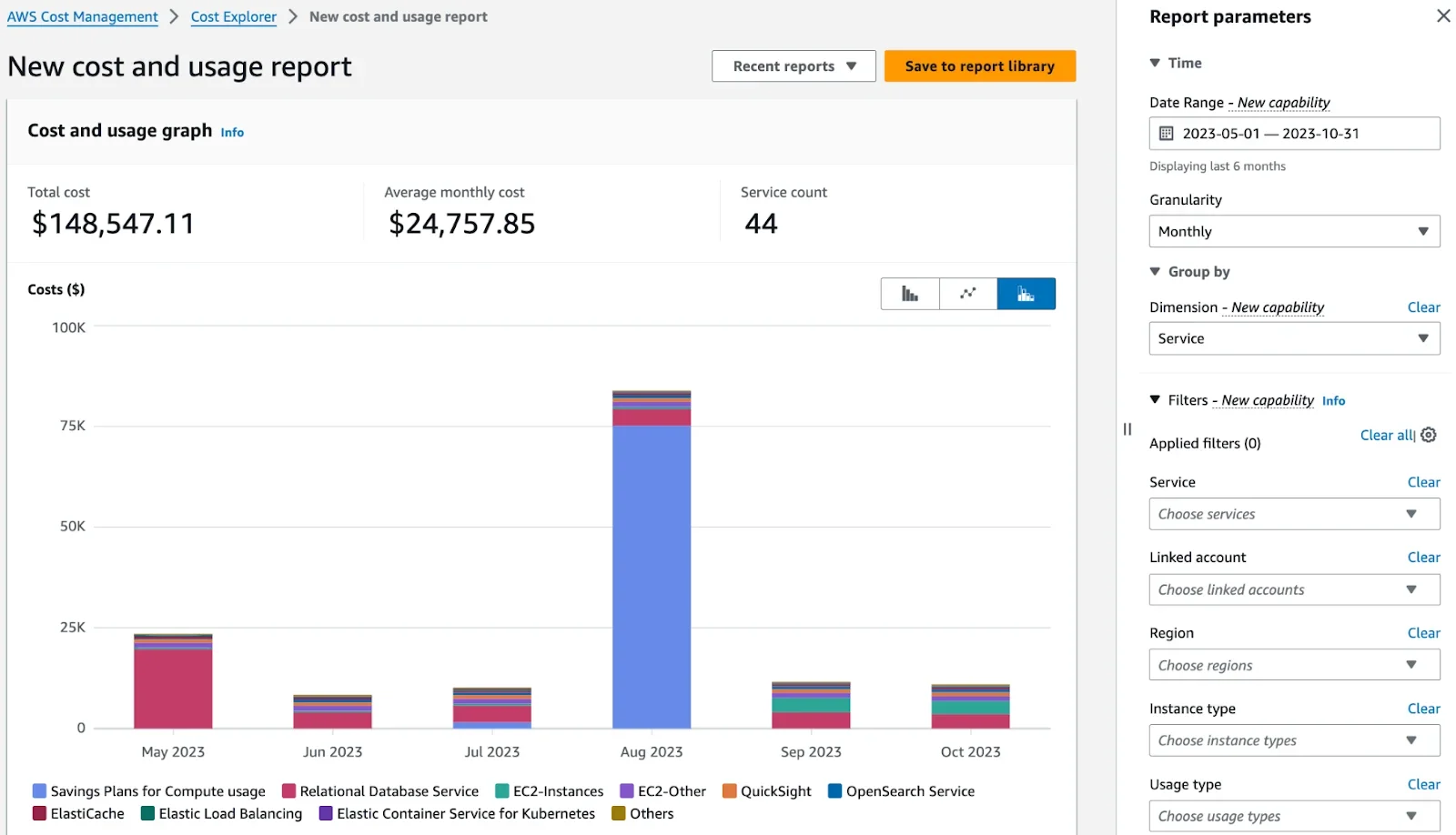
Cost Explorer helps you visualize historical spend and forecast future costs based on trends over the last 12 months.
Key Cost Explorer features include:
- Automatically forecasts spend based on past usage trends
- Forecasts monthly or daily (at least once) granularity
- Includes filtering by service, linked accounts, and usage types
- Integrates with Savings Plans and Reserved Instances views
AWS Budgets Forecasting
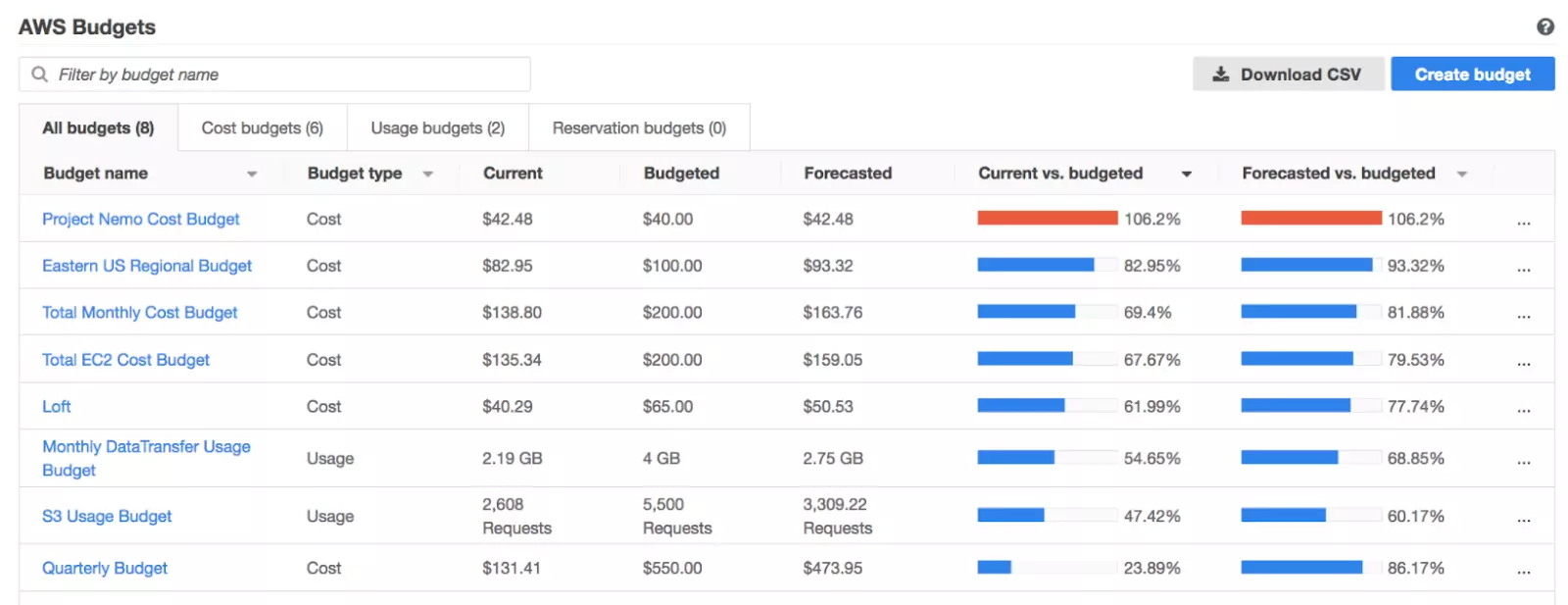
AWS Budgets lets you set custom cost or usage budgets and sends alerts when forecasts indicate you’re going over.
Key Budgets features are:
- Set monthly, quarterly, or annual budget thresholds
- Forecast spend vs. actual usage in real time
- Automate alerts when projected costs exceed budget limits
- Get service- or account-level granularity
- Integrate with CloudWatch and Amazon SNS for real-time triggers
And then there is AWS Forecast.
How Amazon Forecast Helps You Generate Business Insights: Features And Use Cases
Amazon Forecast is a fully managed service that uses machine learning (ML) to deliver highly accurate forecasts for virtually any time-series data. Think of product demand, web traffic, inventory levels, or revenue projections.
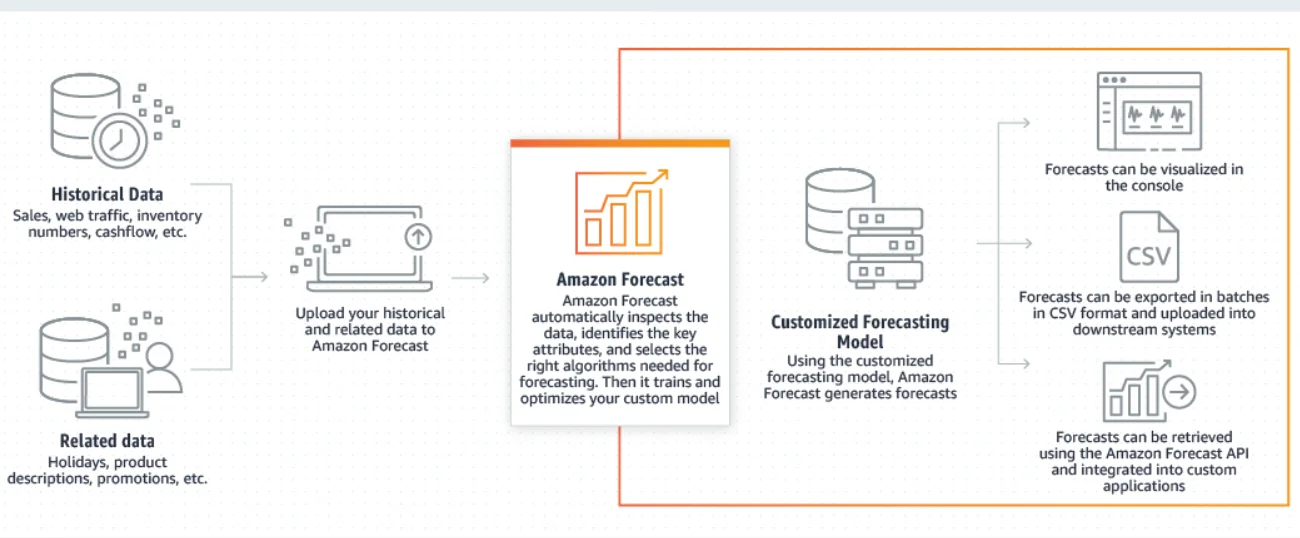
Image: How Amazon Forecast works
It is built using the same tech Amazon.com uses internally to analyze business metrics. That helps you turn historical data into actionable forecasts.
For engineering and finance teams alike, Amazon Forecast turns cloud usage from a reactive exercise (“Why is our bill so dang high?”) into a proactive strategy (“How much should we budget, and what can we optimize in advance?”).
What can you do with Amazon Forecast?
For teams trying to plan AWS infrastructure or align with business growth, Amazon Forecast offers:
- Better capacity planning: Avoid over- or under-provisioning by forecasting compute/storage needs ahead of time.
- Data-driven decisions: Base roadmap choices on predicted demand, not just gut instinct.
- Scalable predictions: Apply the same logic across dozens of products, teams, or customer segments.
- Do custom forecasting without managing ML infrastructure yourself.
AWS Forecast is also versatile across industries and teams:
- Retail and e-commerce: Forecast product demand to improve inventory planning and reduce overstock or stockouts.
- SaaS companies: Predict churn, subscription trends, or user traffic to help plan infrastructure provisioning.
- Finance teams: Forecast revenue, operational costs, or even employee productivity.
- Cloud ops and DevOps: Predict load spikes and usage trends to right-size compute, storage, and network provisioning.
Amazon Forecast also lets you include “related time series” data, like holidays, marketing campaigns, or pricing changes. This can make your predictions even more accurate.
Yet, here’s the thing.
The Pros And Cons Of Using AWS Forecasting To Gauge Resource Needs
AWS forecasting tools can offer valuable insights into both business trends and infrastructure usage. But like any toolkit, they have strengths and limitations you’ll want to weigh judiciously.
Pros of using AWS forecasting
Consider these:
- Better planning and budgeting on AWS: AWS forecasting tools help you anticipate future spend and resource needs based on real historical data. This can help your teams avoid over-provisioning or surprise overages.
- Deep integration with the AWS ecosystem: Tools like AWS Budgets and Pricing Calculator are native to the platform. This makes things easier to forecast and act on without third-party setups.
- Flexible use cases: Amazon Forecast isn’t limited to cost prediction. It can model everything from user signups to product demand, making it useful beyond cloud ops.
- Machine Learning without the overhead: Amazon Forecast also auto-selects the best ML models. This means you can get high-quality forecasts without hiring a dedicated ML team.
- Decent level of cost tracking: AWS Budgets and Cost Explorer support breakdowns by service, linked accounts, and usage types, like this:
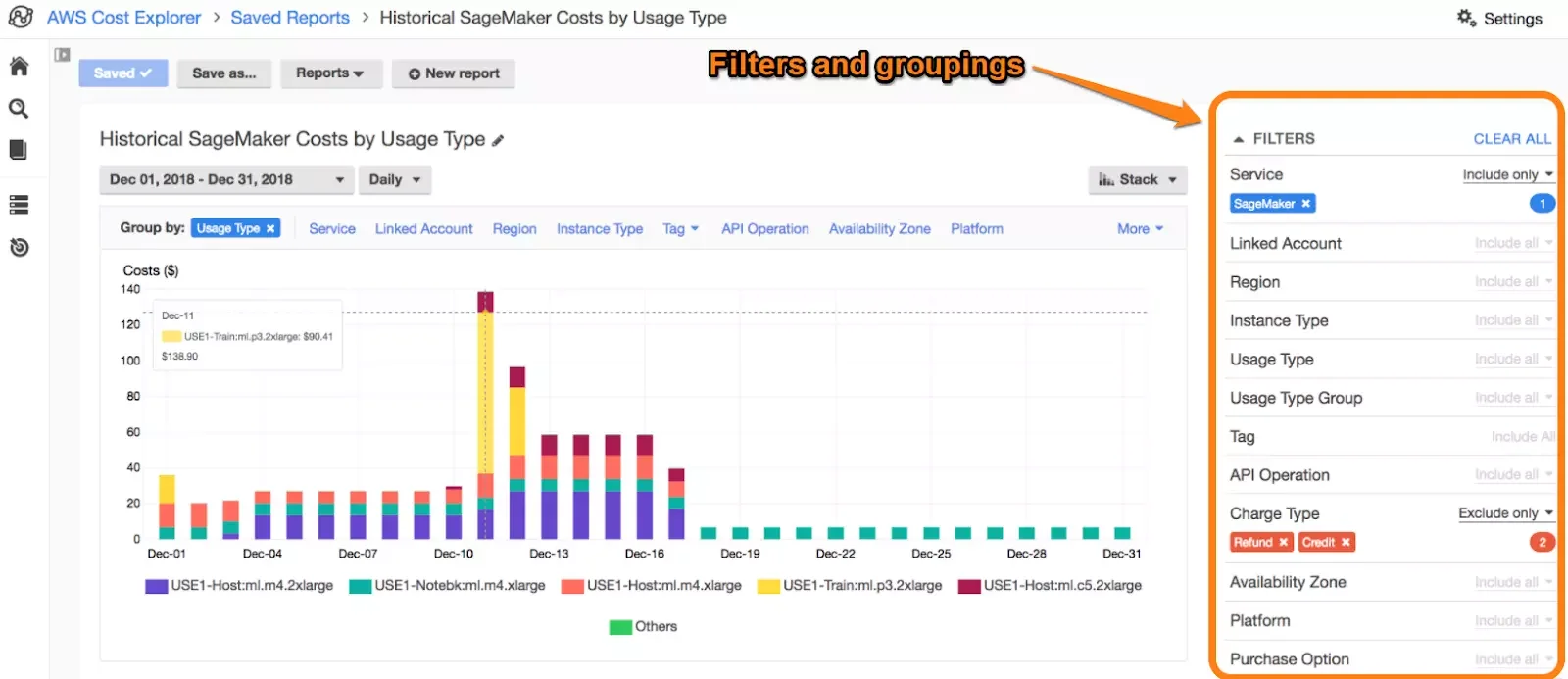
Image: Cost Explorer dashboard
And that means your teams can more easily zero in on spend drivers.
Cons and limitations of AWS forecasting tools
Some of the downsides you’ll notice include:
- Over-reliance on AWS tags: AWS cost forecasting accuracy depends heavily on proper tagging. But let’s be honest, most teams have incomplete, inconsistent tags, which limit visibility.
- Complexity and learning curve: Amazon Forecast, in particular, requires proper data formatting, ongoing data ingestion, and some level of data science familiarity. And this may be a barrier for less experienced teams.
- Lack of context in cost forecasting: Tools like Cost Explorer will show you what you might spend in total, but not who or what drove the change in your bill and why.
For example, they won’t show you cost per customer, per feature, or per deployment.
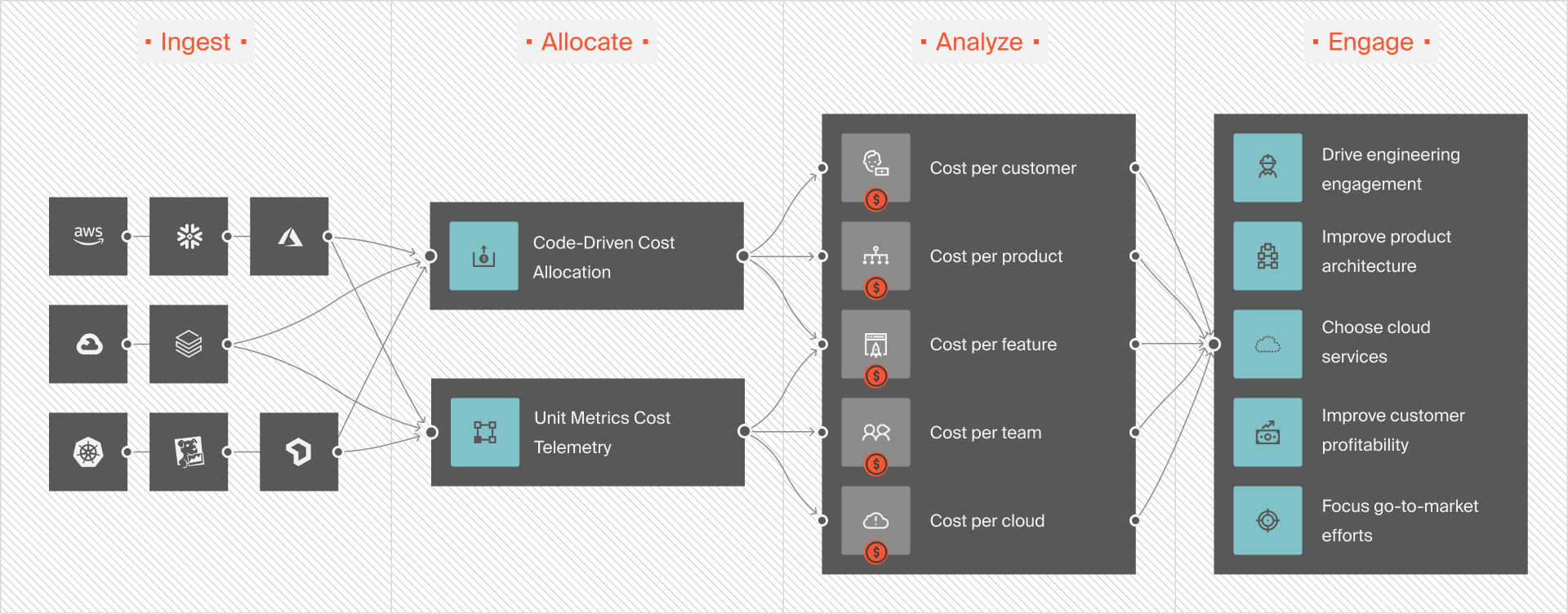
Image: CloudZero offers granular, immediately actionable cost insights like cost per customer and cost per deployment. Take a free product tour here to see more.
And this unit economics gap leaves questions unanswered for engineering and finance teams that want to understand what’s driving costs.
- Static or lagging insights: Many forecasts are based on historical data, updated daily at best (once every 24 hours). That means they often miss hourly reports, real-time trends, usage anomalies, or sudden spikes (like post-deployment cost surges).
- No prescriptive recommendations: AWS tools might tell you you’re projected to overspend. But they won’t tell you how to fix it or where to optimize usage.
- Limited collaboration support: Cost forecasting in AWS has limited built-in workflows for aligning financial and engineering priorities.
Related reads:
While AWS forecasting tools offer a solid foundation, they may not be enough for teams that need real-time, context-rich, and business-aligned insights.
Next Level: Forecast Your Cloud Costs With Precision To Protect Your Margins
Picture this. If AWS forecasting tools give you the map, CloudZero hands you the GPS — with real-time updates, points of interest, and turn-by-turn directions.
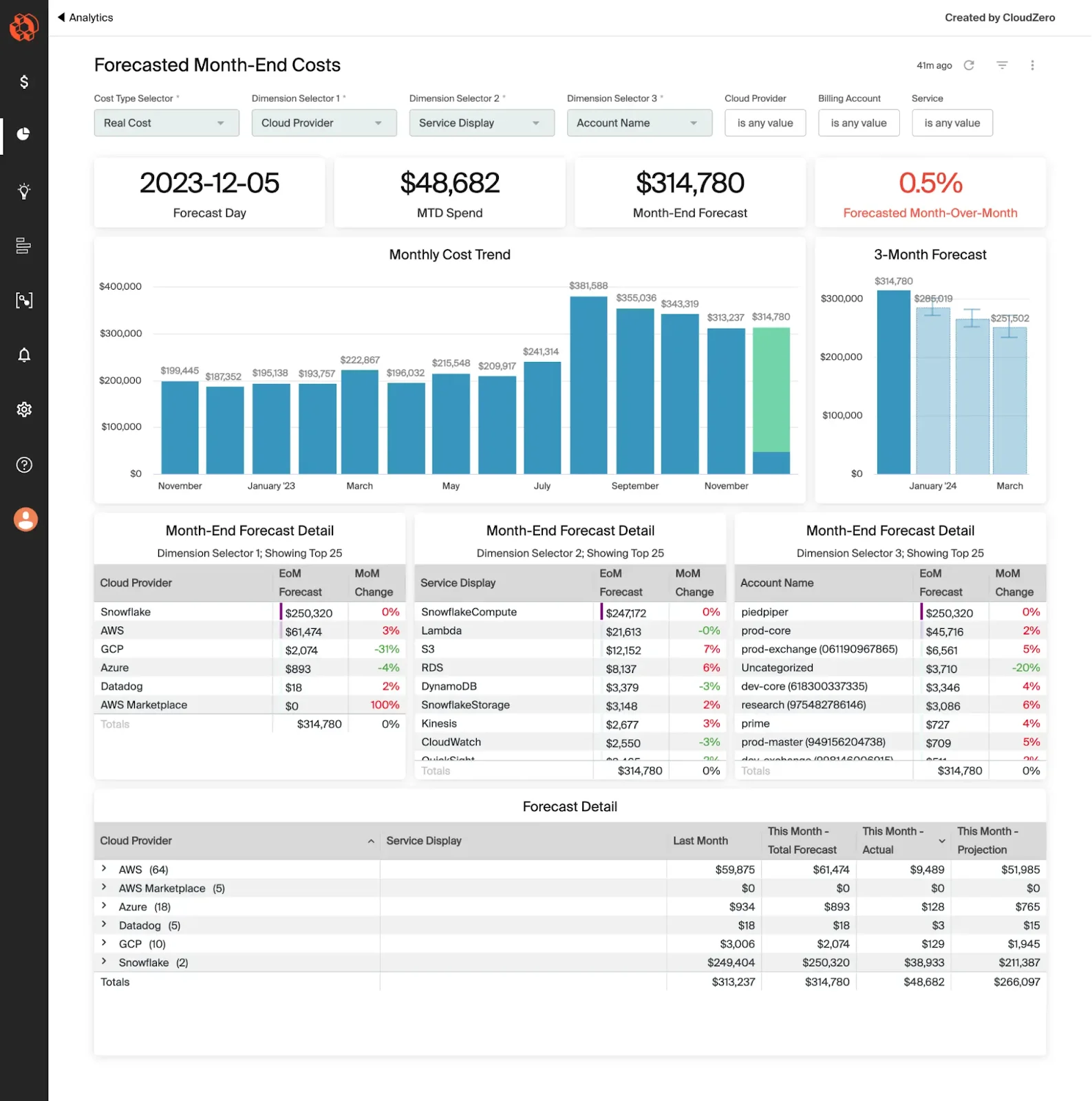
Image: CloudZero Forecasts
Where AWS-native tools rely on historical trends and perfect tagging, CloudZero delivers dynamic, granular cost intelligence that engineering, finance, and product teams can use to make profitable, strategic forecasts.
Here’s how CloudZero elevates your cloud forecasting
- Forecast by what matters most. Predict cloud cost per customer, per team, per product feature, per environment, per deployment, and more — not just total or average spend. With that level of cost visibility, you can finally answer questions like:
- How will our costs change if we onboard five more customers next week?
- Can we afford to give this customer a renewal discount based on their usage, or should we prioritize offers for our most profitable customers?
- Based on this feature’s popularity and the cost to maintain it, should we move it to a paid tier to sustain it?
- No perfect tags required here. CloudZero augments tags with rich telemetry from your applications and infrastructure. This fills in the gaps across untagged resources, shared environments, and even ephemeral workloads — even if your tags are a work in progress.
- See cost impact in real time. Spot trends, spikes, or anomalies immediately (not once every 24 hours) and forecast their long-term impact before they snowball into overruns.
- Unite engineering and finance. Give both teams shared visibility and context so they can plan ahead together, not in silos. This is especially valuable when business decisions and cloud provisioning are tightly coupled, like launching a new feature (engineering) that you expect to go viral (marketing and sales).
Want to know how much a feature launch could cost before you deploy? Or what your burn rate will look like if usage doubles next quarter? CloudZero will help you.  to see for yourself (and discover why teams at Wise, Remitly, and Coinbase trust CloudZero to forecast, control, and optimize their cloud spend).
to see for yourself (and discover why teams at Wise, Remitly, and Coinbase trust CloudZero to forecast, control, and optimize their cloud spend).

